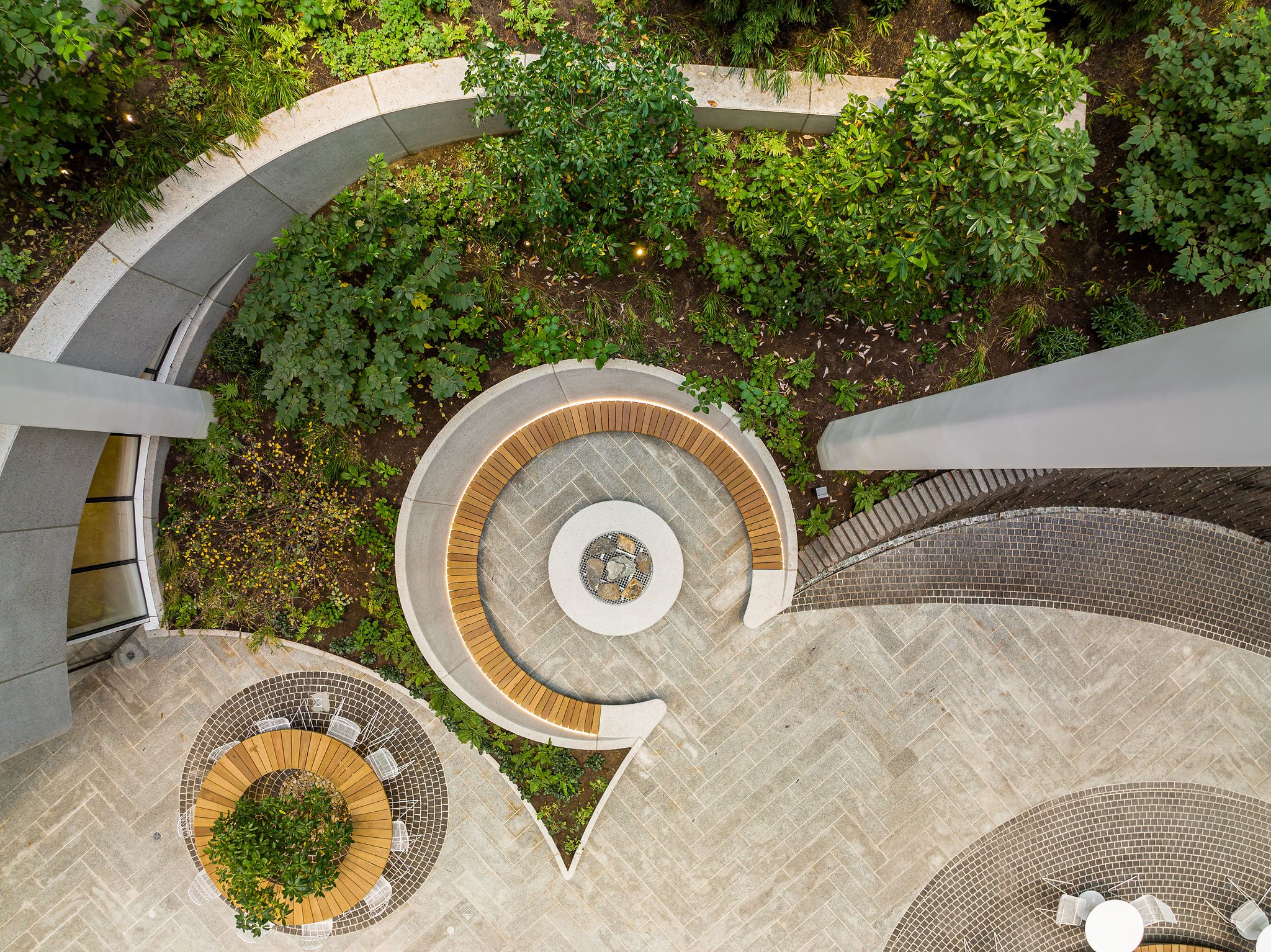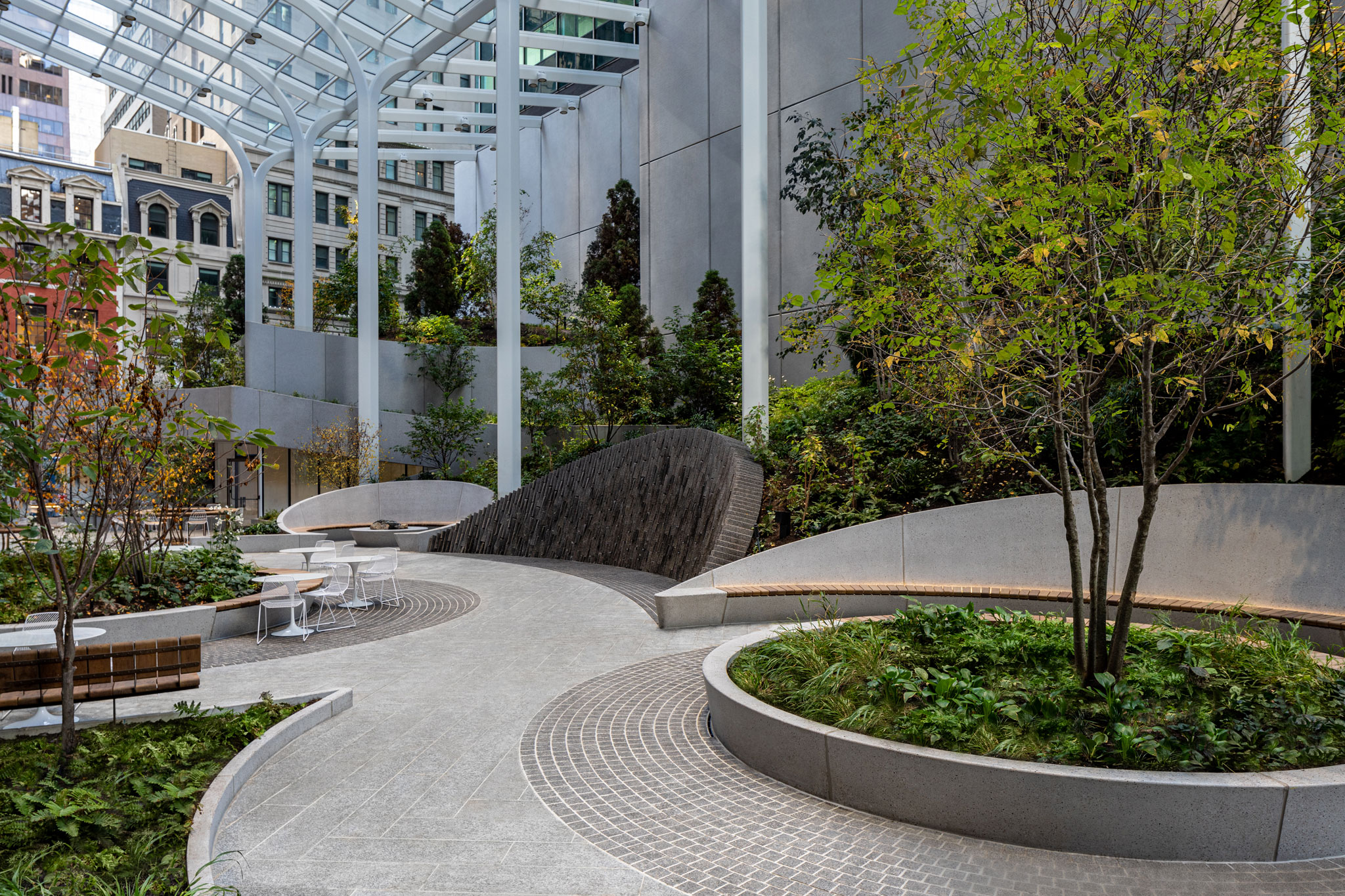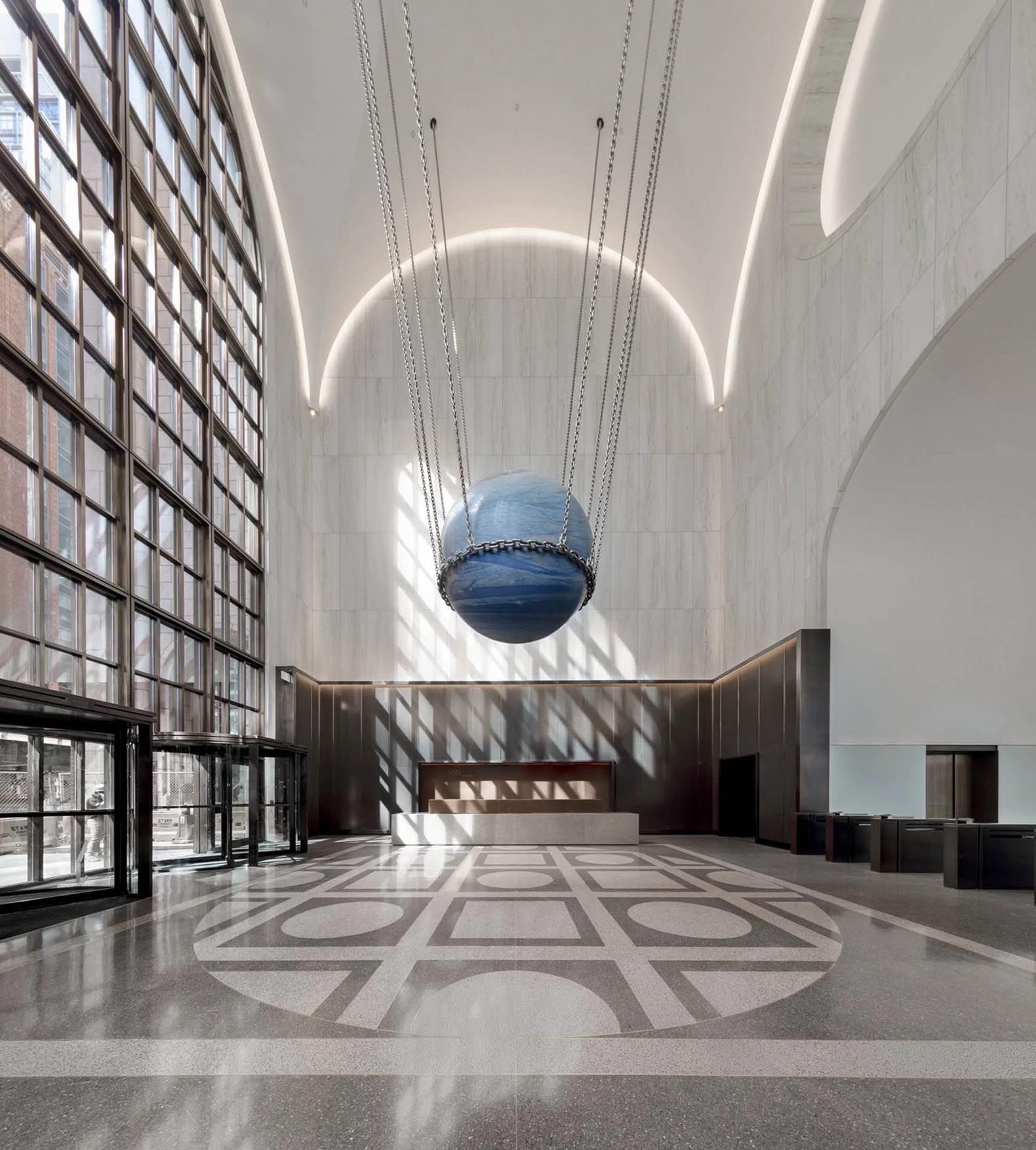The Garden is located adjacent to 550 Madison Avenue in a formerly enclosed mid-block passageway, between 55th and 56th streets in Manhattan. The garden is substantially larger than other local public spaces, with 48 trees, 200 shrubs, 6,300 bulb plants, and 10,000 herbaceous understory plants, according to architects, the garden's bloom calendar is carefully timed for plant species to offer a wide range of colourful hues, from pink to purple, blue and yellow, at different blooming dates from February to October each year.
The project, which has eliminated a former Sony store, adds public facilities such as "gender-inclusive" public restrooms and three kiosks with food and beverage offerings. “We removed a lot more than we added,” says Craig Dykers, a founding partner of Snøhetta.


Mountain Rosebay, Smooth Hydrangea and Bottlebrush Buckeye fill the garden's shrub skirt, with a tree assortment including Yellowwood, Sweetbay Magnolia and River Birch. Planters host a diversity of regional native species, from Soloman's Seal, Goatsbeard and Black Cohosh to Coral Bell and Sword Fern.
Working alongside Snøhetta on the garden was a team of leading landscape and horticulture companies, including Phyto, The Dirt Company, SiteWorks, Arup and Adamson Associates Architects.

The state-of-the-art fitness center at 550 Madison exceeds those of many luxurious private wellness and athletic clubs, with elegant space for health classes and workouts. And a new Gensler-designed lobby creates a cathedral-like experience, full of sunlight, bronze mesh materials, rust-colored leather and a greyscale terrazzo floor.
Sunshine from a soaring 65-foot arched-glass window spills light onto the building’s centerpiece artwork, “Solid Sky,” by the artist Alicja Kwade. The 1.2-billion-year-old, 24-ton spherical installation is made of Azul do Macaubas quartzite that was quarried in Brazil before being suspended by chains from 550 Madison's vaulted, triple-height ceiling.












































